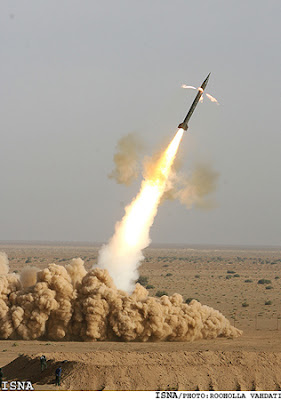Tuesday Roll-up of Missile Issues
Items of note from around the world today:
1. China’s ASAT test:
- China admits anti-satellite test: January 24, 2007. BEIJING: China has broken its silence and admitted that it held an anti-satellite test two weeks ago, confirming earlier reports from Washington. But a Foreign Ministry spokesman said China opposed any arms race in space and he knew of no plans for a second test. “China has always advocated the peaceful use of space, opposes the weaponisation of space and an arms race in space,” Liu Jianchao said yesterday. “China has never participated and will never participate in any arms race in outer space.” Mr. Liu told a news conference in Beijing that the Government had told the US of the test. “This test was not directed at any country and does not constitute a threat to any country,” he said. China has repeatedly refused to say publicly whether it knocked one of its own ageing satellites out of the skies with a missile on January 11, in what US officials criticised as a provocative escalation of military competition. Australia joined the US, Canada, Britain and Japan in expressing concern about the test. Asked about the danger posed by satellite fragments, Mr. Liu said only: “This is a highly technical question.” (ed. note: Guess this means the Russian Foreign Ministry can come out of the closet now and admit that, well, yes, the Chinese really did conduct an ASAT exercise…)
-
US OFFICIALS CITE CONCERNS ABOUT CHINA TEST DEBRIS, Reuters, January 22, 2007. Trash from China’s satellite-killing missile test has spread widely in space, creating a debris cloud that could jeopardize spy satellites and commercial imagery satellites in low orbits around Earth, U.S. officials said on Monday. Even the manned International Space Station is vulnerable to being hit by some of the thousands of pieces of trash created when China slammed a ground-based medium-range ballistic missile into an aging Chinese weather satellite about 537 miles (865 km) above Earth on Jan. 11, the officials said. … It could take decades for debris from the Chinese weather satellite to fall out of orbit. … No current international treaties or agreements prohibit anti-satellite tests … However, a 1967 global Outer Space Treaty does require notification of maneuvers in space, and holds countries liable for their actions, which means commercial operators could sue China for damages if their satellite was hit by debris. …
-
Other discussions re. China’s ASAT include a very cogent analysis of the test itself over at The Arms Control Otaku. His analysis includes the following salient points:
- The satellite’s flight path was predictable;
- It passed very close to the launch site;
- The target was emitting a trackable signal and
- Modifications were made to the satellite’s flight path to line it up with
the kill vehicle launcher
Establishing controls in a test such as this is not a unique behavior. Early in a development program one always seeks to reduce variables and gradually introduce them later in the program as one gains confidence. The controls described above are not surprising and as the source writer points out, are indicative of an earlier generation of ASAT which implies fairly limited capabilities. Indeed, one for the problems with fixed location, ground-based interceptors is their limited FoV for intercept – a shortcoming that was mitigated when the US developed its airborne ASAT launched from an F-15. (ed. note: The Navy did investigate the feasibility of using the F-14 in a similar role with the Chance/Vought interceptor as it was particularly concerned with Soviet RORSATS and the IO, but chose to forego the effort as funding was being sucked into the black-hole that was the A-12 program).
The use of an emitter on the target is also not surprising – many AAW missilexes’ have had the drone squawking IFF (And how many RIOs and E-2 moles have sneaked a peak at the IFF paint to ensure they were tracking the right target? You know who you are…). What is problematic (for the US) is the guidance package on the booster to get the ASAT in the basket for an intercept. That accuracy appears to have been upped, which one presumes is an outgrowth of similar capability boosts for the more “generic†MRBM/IRBM packages out there.
 2. Iranian Missile Exercises – OP Away, the tests have begun: (AP)TEHRAN, Iran – Iran conducted missile tests yesterday as its leadership stepped up warnings of a possible military confrontation with the United States. Yesterday, the Iranian military began five days of maneuvers near the northern city of Garmsar, about 60 miles southeast of Tehran, state television reported. The military tested its Zalzal-1 and Fajr-5 missiles, the report said.
2. Iranian Missile Exercises – OP Away, the tests have begun: (AP)TEHRAN, Iran – Iran conducted missile tests yesterday as its leadership stepped up warnings of a possible military confrontation with the United States. Yesterday, the Iranian military began five days of maneuvers near the northern city of Garmsar, about 60 miles southeast of Tehran, state television reported. The military tested its Zalzal-1 and Fajr-5 missiles, the report said.

One Comment
Comments are closed.